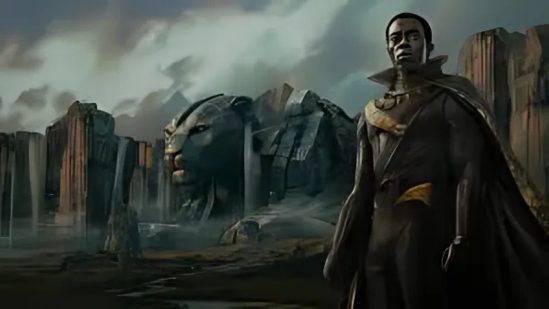
The global film industry is currently buzzing with excitement and concern over the making of the world’s most expensive film, which has reportedly cost a record-breaking $1 billion to produce. What makes the situation even more surprising is that around $250 million of that budget has been paid just to the star cast. Despite the impressive lineup of A-list celebrities and cutting-edge visual effects, industry experts are warning that the movie may still flop at the box office—even if it earns more than legendary blockbusters like Jurassic Park or The Lord of the Rings.
Spending $1 billion on a single film is an unprecedented move in cinema history. In comparison, the most successful Hollywood films like Avatar, Avengers: Endgame, and Titanic were made on budgets ranging from $250 million to $400 million. This new film goes far beyond those numbers, making it one of the biggest financial risks ever taken in the entertainment industry. The film is being produced on a grand scale, featuring advanced CGI, high-end production design, international shooting locations, and top-tier technical teams. The filmmakers hope to create a visual masterpiece that redefines what a modern blockbuster can be.
One of the major reasons for this staggering cost is the cast salaries, which alone total around $250 million. Some leading actors are reportedly earning $50 million or more each, breaking previous records for individual payments in the film industry. While hiring such big stars can help attract global attention, it also puts massive pressure on the film’s performance. If the script or direction fails to impress audiences, then even the most popular celebrities may not be able to save the film from commercial failure.
The production team expects the film to earn more than major classics like Jurassic Park (which earned over $1.04 billion globally) and The Lord of the Rings: The Return of the King (over $1.1 billion). But industry analysts warn that even if the movie crosses the $1.2 billion mark, it might still lose money. This is because a large part of the box office revenue goes to theaters and distributors. Usually, about 50% of ticket earnings go to cinemas, and an additional portion is spent on distribution and marketing, which often isn’t included in the initial production budget. For a movie with a $1 billion budget, it would need to earn nearly $2 billion worldwide just to break even—a milestone reached by very few films in cinema history.
Despite its high ambitions, the movie faces several challenges that could lead to its downfall. First, the audience’s expectations are extremely high. With such a massive budget and star-studded cast, viewers expect nothing less than a masterpiece. If the film’s story or pacing is weak, audiences might be disappointed, leading to bad reviews and poor word-of-mouth publicity. Second, in the age of streaming services, many people prefer to watch content at home instead of going to theaters. Unless the film offers a unique and mind-blowing experience, it might struggle to draw large crowds. Third, if the film receives mixed or negative reviews upon release, ticket sales could drop rapidly, making it harder to recover the investment.
Understanding how movie economics work is important here. When a film earns money at the box office, the studio doesn’t get to keep all of it. Theaters usually keep about half of the ticket sales, and more money is spent on promotions, global releases, dubbing, and legal rights. This is why even a film that grosses $1.5 billion globally may only return $700–800 million to the studio. This amount may not be enough if the movie’s production and marketing budget combined exceed $1 billion.
There are several examples of past expensive films that failed despite big names and huge promotions. John Carter (2012) reportedly cost around $300 million and lost over $200 million at the box office. The Lone Ranger (2013) was another Disney production that flopped hard, despite featuring Johnny Depp. Even Justice League (2017), despite being part of the DC Universe and featuring Superman, Batman, and Wonder Woman, did not perform well enough to be considered profitable.
With the rise of online platforms and streaming services, some people believe that massive theatrical budgets are outdated. Platforms like Netflix, Amazon Prime, and Disney+ are now producing movies and series with budgets of hundreds of millions. For example, Amazon’s The Rings of Power reportedly cost $1 billion for one season. However, streaming budgets are often spread over multiple episodes or seasons, while the new film in question is just one single movie with an enormous cost.
The global market is also unpredictable. Even if a movie does well in North America, it might not succeed in other parts of the world due to cultural differences, censorship laws, or competition from local films. With political tensions and shifting global audiences, it’s getting harder for Hollywood movies to rely on foreign box office for profits.
Public opinion is divided. Some fans are excited to see what a $1 billion film looks like on the big screen, especially with such a glamorous cast and advanced visuals. However, many others feel the movie is being overhyped and fear it may be all style and no substance. Critics and movie experts argue that studios should invest more in good stories rather than just flashy effects and star power. They believe that focusing too much on visuals and actor salaries can lead to disappointment if the script isn’t engaging.
If the film does become successful, it could change the movie industry forever. Studios may become more confident about spending billions, and future films might continue to get bigger and more expensive. But if it flops, it will serve as a major warning sign to the industry. It may cause studios to think twice before greenlighting such high-risk projects in the future.
The world’s most expensive film, with a $1 billion budget and $250 million spent on its cast, is either going to be a revolution in filmmaking or a historic flop. The stakes are incredibly high, and the entire entertainment world is watching closely. Whether it ends up becoming one of the greatest films ever made or one of the biggest financial failures, this project has already made its mark in history. The real question now is: will the audience accept it, or will it fall under the weight of its own ambition?


































